Celebrity News Posts on Crowch
In 2025, How to Train Your Dragon returns in a live-action adaptation, and at the heart of the story again is Stoick the Vast—brought to life by Gerard Butler According to 17-year-old co-star Mason Thames, Butler’s commanding presence on set made everyone “cower,” portraying both a formidable Viking leader and a tender father.
Known for his physical presence in 300 and charismatic roles in films like Law Abiding Citizen, Butler brings emotional weight to Stoick—a warrior ready to evolve for his son and his people. His return guarantees a combination of epic scale, family drama, and heartfelt storytelling.
🎥 Why it matters:
- Butler blends action and emotional depth in a paternal role.
- Elevates an animated character for live-action epic storytelling.
- Explores fatherhood and leadership in a mythical, dragon-filled landscape.
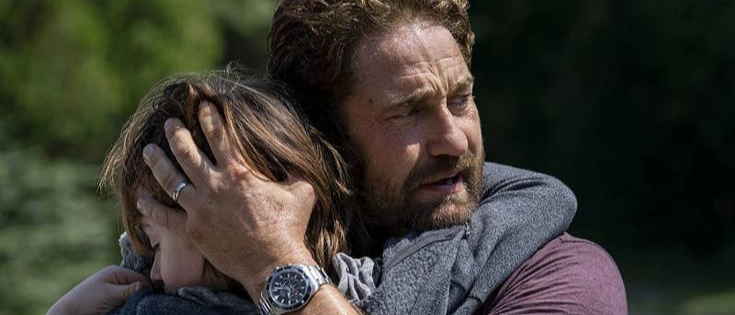
The live-action How to Train Your Dragon (2025) marks one of the most ambitious cinematic reimaginings of a beloved animated franchise. Directed by Dean DeBlois, who returns to shepherd his own legacy, the film aims not to simply replicate the magic of the original — but to enrich it with grounded emotion, layered performances, and visual realism. At the center of this retelling stands Stoick the Vast — a towering presence in both lore and heart — reinterpreted by Gerard Butler with fresh intensity and vulnerability.
In this adaptation, Stoick isn’t just a roaring warrior with a giant axe and a booming voice. He’s a man grieving, hoping, evolving. Haunted by the death of his wife and the uncertain future of his people, Stoick finds himself at a generational crossroads. Dragons are no longer just beasts to be fought — they’re a mirror, challenging what it means to lead, to protect, and to let go. His relationship with Hiccup, now on the cusp of manhood, becomes the emotional spine of the narrative.
Gerard Butler taps into that duality — the iron-willed Viking chief and the deeply conflicted father. This isn’t the stylized shouting of action cinema. His Stoick carries silence like a shield. In one of the film’s most intimate scenes, he places his palm against a dragon’s scarred hide, not with fear, but recognition — a man who knows what it is to be misunderstood, to be shaped by survival.
The visual design of Stoick is both faithful and elevated: a blend of Norse armor realism with fantastical elements — weather-worn furs, hand-carved sigils, and the scars of countless battles. Yet it’s the eyes that hold the truth — Stoick watches Hiccup not as a soldier would an apprentice, but as a father afraid he may lose his son to a world he no longer understands.
Mason Thames, playing Hiccup, creates a dynamic chemistry with Butler that captures the nuance of a boy emerging from under his father’s shadow. Their exchanges oscillate between friction and mutual awe. Hiccup’s innovations — his desire to befriend dragons, not kill them — force Stoick to question his legacy and the cost of traditions built on fear.
Butler’s return to the role, this time in live-action, adds a layer of meta resonance. Having voiced Stoick in all three animated films, he approaches the character not from scratch, but from within — adding subtle layers to what was once a heroic archetype. His performance feels lived-in, like he’s grown alongside the character himself.
The world-building supports this transformation. The village of Berk has been reimagined not just as a fantastical setting, but as a living, breathing society — textured, flawed, and beautiful. Dragons are realized through a mix of practical effects and top-tier CGI, giving them weight, presence, and emotion. Toothless, in particular, becomes more than a creature — he’s a symbol of trust, bridging the human and the mythic.
The film also leans into themes of masculinity, vulnerability, and generational inheritance. Stoick’s arc is not about conquering dragons, but conquering pride. Through Hiccup’s journey, he learns that strength can mean listening, that bravery can be gentle, and that leadership sometimes means letting the next generation forge a new path.
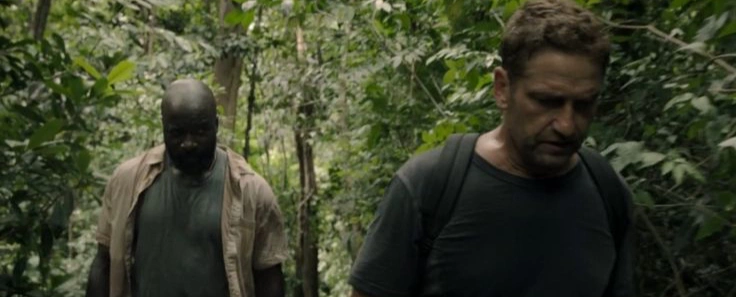
Composer John Powell returns to reimagine his iconic themes for a full orchestra and live instrumentation, creating soaring emotional peaks and hushed, intimate valleys that underscore Stoick’s internal journey.
Ultimately, How to Train Your Dragon (2025) isn’t just a fantasy epic — it’s a story about fatherhood, legacy, and learning to see the world through younger eyes. Gerard Butler doesn’t just reprise Stoick the Vast — he redefines him, reminding us that even the mightiest warriors are, at heart, fathers trying to do right by their children.
In a world where millions of children are denied basic education, the voice of one girl changed the course of history. Malala Yousafzai, born in the Swat Valley of Pakistan in 1997, understood from a young age how powerful education could be.
When the Taliban took control of her region and banned girls from going to school, Malala, then just a teenager, began to speak out — first anonymously, then openly.
She wrote a blog for the BBC, describing life under Taliban rule: fear, violence, the closing of schools. Her words reached the world — and defied local extremism.
On October 9, 2012, Malala was shot in the head by a Taliban gunman while riding a school bus. She survived — and grew stronger.
After a long recovery in the UK, Malala became a global advocate. She spoke at the UN, met with world leaders, and in 2014, at the age of 17, became the youngest-ever Nobel Peace Prize laureate.
“One child, one teacher, one book, one pen can change the world,” she declared.
Through the Malala Fund, she now supports girls’ education worldwide, especially in areas affected by poverty, war, or gender discrimination.
She continues to fight — not just for access to education, but for the dignity, rights, and futures of millions of girls who need a voice.
Malala Yousafzai's story is not just one of survival — it is one of radical hope, relentless courage, and the refusal to be silenced. Her journey from a rural valley in Pakistan to the global stage has made her a symbol not only for education rights, but also for resilience in the face of extremism and oppression.
What makes Malala’s activism extraordinary is not just the risks she took, but the clarity of her vision at such a young age. Even before the world knew her name, she believed education was not a privilege — it was a right. Her courage wasn’t born from rebellion, but from conviction: that every girl deserves to learn, to lead, and to live with agency.
As her public profile grew, so did the challenges. Threats against her and her family intensified. But Malala never chose hatred as a response. Instead, she spoke with empathy — not just for herself, but for the countless children denied the chance to sit in a classroom, to read freely, to dream beyond traditional roles. She carried not only her story, but theirs.
Malala’s influence extends far beyond speeches and headlines. The Malala Fund, co-founded with her father Ziauddin — an educator who inspired her early on — supports grassroots organizations in countries like Nigeria, Ethiopia, India, Brazil, and Afghanistan. The Fund’s mission is simple but powerful: invest in local education leaders, amplify girls’ voices, and hold governments accountable for policy change.
She also emphasizes the intersectionality of education with other global issues: climate change, refugee crises, racial justice, and digital access. Malala believes that education is not a single cause, but a foundational solution — one that ripples across every social and economic sphere.
A graduate of Oxford University, where she studied Philosophy, Politics, and Economics, Malala continues to bridge activism with academia. She has used her global platform to highlight how cultural traditions, poverty, and conflict disproportionately affect girls. Her campaigns challenge not only policies but perceptions — working to shift how the world sees young women and how young women see themselves.
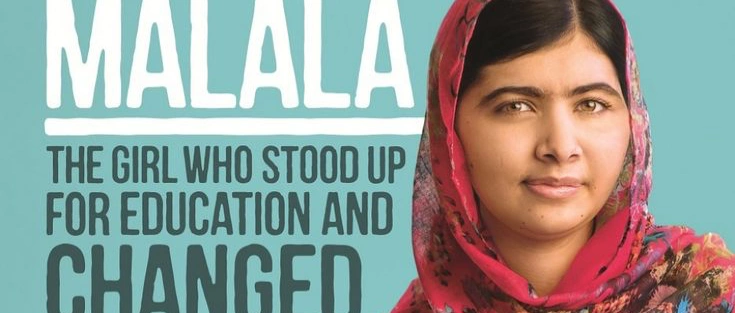
In interviews and writings, she often reminds audiences that she is still learning, still growing. This humility — coupled with her wisdom — makes her voice uniquely powerful. She is not claiming to have all the answers; rather, she is asking the world to listen, to learn, and to act.
Malala’s impact is visible in classrooms reopened, in policies reformed, and in the millions of girls who now see themselves in her. But perhaps most importantly, she has changed what it means to be a young activist in the 21st century. She has shown that age does not limit authority, that bravery is not the absence of fear, and that stories — even painful ones — can become tools for justice.
Her memoir, I Am Malala, continues to inspire readers of all ages, reminding us that change often begins in the smallest of places — a classroom, a diary, a voice raised in defiance.
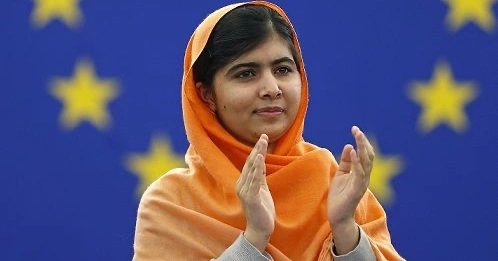
Through her life and work, Malala Yousafzai reminds the world of a simple truth: educating girls doesn’t just change individual lives — it changes entire societies. Her fight is far from over, but her legacy is already undeniable. She has turned tragedy into transformation and stands not only as a survivor, but as a symbol of what is possible when one voice dares to speak for millions.
After the resounding success of the first two films, “Dune: Messiah” becomes the third chapter in Denis Villeneuve’s epic saga based on Frank Herbert’s novels. Timothée Chalamet returns as Paul Atreides — now a messianic emperor torn between personal loss and the fate of the galaxy. Set for release on December 18, 2025, the film is already hailed as the trilogy’s most emotionally complex installment.
Set several years after Paul’s victory over the Harkonnens, the film follows a man who, despite being revered as a savior, is haunted by visions of tyranny and destruction. Chalamet delivers a profound transformation: Paul is no longer a youthful avenger, but a reluctant ruler burdened by power. New characters emerge — Alia (Florence Pugh), the mysterious Scytale, and the escalating political games of the Bene Gesserit.
Visually, the film expands even further: desert warfare gives way to sacred temples, prophetic dreamscapes, and monumental worm sequences. Hans Zimmer returns with a new score filled with Middle Eastern tones and haunting choir motifs. Villeneuve describes Messiah as “a prayer and a warning” — a meditation on leadership, sacrifice, and consequence.
Chalamet, having evolved from his breakout in Call Me by Your Name to a galactic ruler, now delivers a performance of quiet intensity, philosophical weight, and restrained emotion. His Paul Atreides cements itself as one of sci-fi’s most complex figures — and a career-defining role.
Dune: Messiah marks a dramatic tonal shift from the triumph of its predecessor. If Dune: Part Two was a story of vengeance and revolution, Messiah is a meditation on what follows victory — the price of power, and the loneliness of those who wield it. Denis Villeneuve leans deeply into the novel’s introspective heart, crafting a film that questions not only heroism, but the narratives we create around leaders and legends.
The story begins with Paul firmly seated on the throne as Emperor of the Known Universe, backed by the fanatical loyalty of the Fremen and the fear of every great House. But the victories of the past now feel hollow. The jihad carried out in his name has left billions dead across the galaxy, and Paul wrestles with whether his visions of the future — full of fire, blood, and repression — are inevitable, or if he still has the agency to break the cycle.
Florence Pugh’s Alia Atreides is a revelation — Paul’s younger sister, born with ancestral memories, possessing immense power and unnerving maturity. Pugh brings a chilling clarity to the role, portraying Alia as both a protector and a threat, a spiritual guide and a wildcard whose very existence unsettles the political balance. She shares the burden of prescience, and her scenes with Paul crackle with eerie sibling intimacy and ideological conflict.
A significant addition is Scytale, a Face Dancer of the secretive Tleilaxu order — a shapeshifting conspirator whose motives lie at the heart of the anti-Atreides resistance. Their presence brings themes of identity, illusion, and biological manipulation to the forefront, expanding the series' exploration of what it means to be human. Cast in this enigmatic role is Barry Keoghan, whose unsettling calm makes Scytale both seductive and terrifying.
Rebecca Ferguson returns as Lady Jessica, now more firmly entrenched in the designs of the Bene Gesserit. Torn between maternal loyalty and political duty, she embodies the series’ ongoing meditation on female agency, religious manipulation, and generational legacy.
The film’s aesthetic, while maintaining the stark grandeur of Arrakis, now leans heavily into mysticism. Villeneuve and cinematographer Greig Fraser employ dreamlike lighting, rich golds and blood reds, and prolonged silences to evoke sacred spaces and inner turmoil. Sequences set within Fremen sietches are now interspersed with haunting visions and ancient prophecies unfolding like puzzle pieces — creating a dual reality where the spiritual and political collide.

Hans Zimmer’s score evolves accordingly, incorporating Sufi musical traditions and layered vocalizations that reflect both ecstasy and lament. The music pulses with tension — less bombastic than in previous films, more ceremonial and dissonant, echoing the conflict within Paul himself.
Despite the scale, Dune: Messiah is a deeply intimate film. Paul Atreides spends much of it not in battle, but in quiet agony — questioning the very faith placed in him. Can a messiah renounce his role without dismantling the belief systems of those who follow him? Can he choose love over legacy?
As Chani (Zendaya) grows increasingly alienated by Paul’s detachment, their love becomes another battlefield. She challenges his choices, reminds him of the man he once was, and grounds the story in human emotion amid cosmic politics.
This chapter offers no easy victories. It is a film about myth collapsing under the weight of truth, and about a man who sees everything coming — but still cannot stop it.
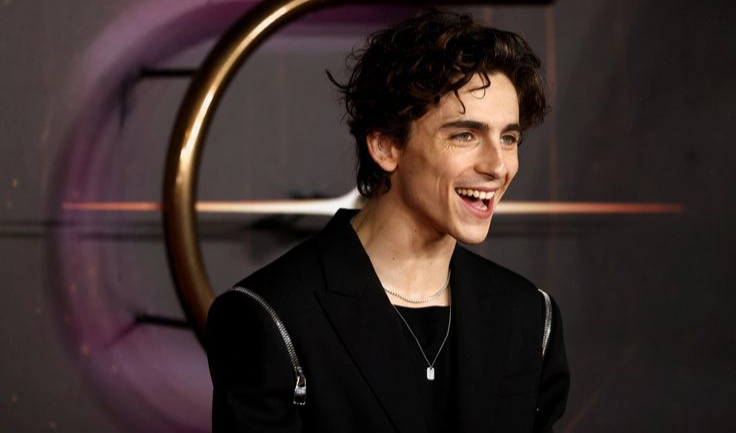
Dune: Messiah is more than a sequel. It’s an existential reckoning wrapped in science fiction — as bold and introspective as its protagonist, and destined to spark conversation long after the sands settle.
After the runaway success of Poor Things (2023), Emma Stone returns in the highly anticipated sequel “Poor Things: Resurrection”, set for release in fall 2025. Director Yorgos Lanthimos once again leads the project, promising a bolder, visually provocative, and philosophically rich continuation. Stone reprises her role as Bella Baxter — a character now evolving into a symbol of not just liberation, but transhumanist questions about what it means to be alive.
Set in a scientifically utopian version of London, Bella finds herself confronting a corporate elite experimenting with human cloning in pursuit of eternal youth. The core dilemma: is a person defined by memory, emotion, or flesh? Stone's Bella is older, wiser, and mythic — embodying questions that transcend the screen. Co-stars include Jessie Buckley, Paul Mescal, and Colin Farrell in striking new roles.
Artistically, the film is a masterwork of steampunk surrealism and neo-Victorian worldbuilding. Lavish costumes, painterly lighting, and bold production design turn every frame into a painting. Stone, having won an Oscar for the original, elevates Bella into a cinematic icon — not just a character, but a figure of philosophical resonance.
Premiering on October 11, 2025, with screenings at the Venice and New York Film Festivals, Resurrection is already being called one of the year’s boldest arthouse triumphs — and a testament to Emma Stone’s fearless commitment to challenging, transcendent roles.
Poor Things: Resurrection is not merely a sequel — it’s a radical reawakening of the cinematic universe Lanthimos first sculpted with mad elegance and philosophical daring. Where Poor Things introduced Bella Baxter as a liberated being reclaiming agency, Resurrection thrusts her into a post-human society where consciousness itself is a currency and biology is no longer destiny.
The film begins with Bella at the height of intellectual celebrity — a scientific pioneer, public speaker, and controversial philosopher. But with influence comes danger. When she’s invited into a seemingly utopian research society, she uncovers a disturbing reality: the institution’s experiments with “mortal recycling” aim to erase death not by preserving life, but by copying it. What starts as fascination quickly descends into a psychological and ethical labyrinth.
Bella becomes both subject and observer — navigating corridors of cloned bodies, fractured memories, and synthetic souls. The film challenges the viewer to consider not just what makes someone human, but when and why that humanity matters. As Bella grapples with versions of herself — literal and metaphorical — the lines between original and echo blur.
Emma Stone’s performance is layered with irony, tragedy, and grace. Gone is the impulsive wonder of the younger Bella; in its place is a woman unafraid of her contradictions. She is fierce, calculating, sometimes unkind — but always guided by a desire to understand existence at its core. It’s a performance that balances theatricality with surgical precision, and it anchors the film’s surrealism in emotional truth.
Lanthimos, meanwhile, uses the camera like a scalpel and a paintbrush. There are no traditional narrative beats here — scenes bleed into each other like half-remembered dreams. The aesthetic blends Victorian technology with dystopian futurism, creating a hybrid world where cobblestone streets lead to genetic labs and gaslights illuminate philosophical salons. Cinematographer Robbie Ryan’s work evokes both old-world opulence and cybernetic unease, while Jerskin Fendrix’s score pulsates with operatic dissonance.
Jessie Buckley delivers a wild and unforgettable turn as a rogue scientist who both rivals and reveres Bella. Paul Mescal plays an enigmatic archivist who stores the memories of deceased thinkers — a man caught between obsession and devotion. Colin Farrell, reuniting with Lanthimos once again, offers a haunting portrayal of a once-revolutionary now complicit in the very system he once sought to dismantle.
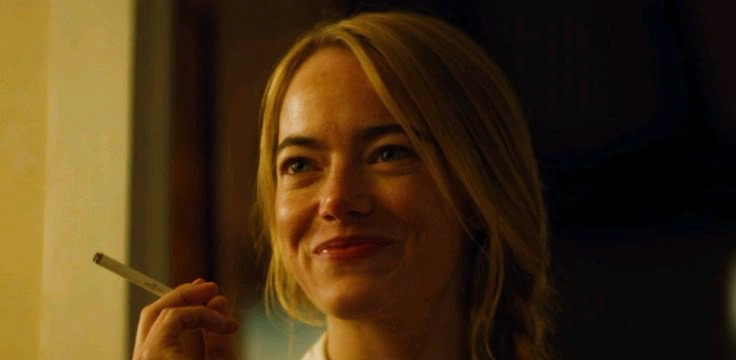
But at the heart of it all remains Bella — not just reborn, but redefined. Her arc in Resurrection transforms her into a mythic figure, not by virtue of power, but by insight. She becomes a mirror through which society’s deepest hopes and fears are reflected: immortality, autonomy, meaning, and the right to change.
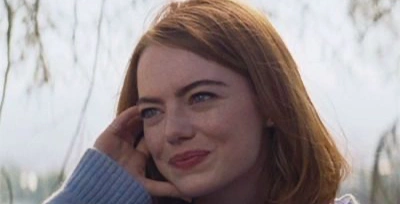
As with Lanthimos’s best work, Resurrection does not offer comfort. It seduces, provokes, and ultimately destabilizes. It is at once grotesque and gorgeous, absurd and profound. It demands intellectual engagement — not with answers, but with questions that linger long after the final scene fades to black.
More than a film, Poor Things: Resurrection feels like an evolution in arthouse cinema — unafraid to break form, reshape genre, and challenge the emotional bandwidth of its audience. Emma Stone’s Bella Baxter stands now not just as a character of the moment, but as a landmark in the storytelling of the future.
Keanu Reeves returns as John Wick in “John Wick: Origins”, the fifth installment of the beloved franchise, arriving in summer 2025. The film blends style, action, and character-driven drama, offering an intimate look into Wick's origins and the deadly network known as the High Table.
Directed by Chad Stahelski and produced by Francesca Tosi, the script delves deeper into Wick’s past, exploring his connections to a shadowy order of assassins. Reeves reprises his role as Leonois — the stoic, honorable killer introduced in the original film — now investigating a betrayal within the High Table, confronting old allies, new enemies, and his own conscience.
New cast members include Lucas Walton portraying a young Wick in flashback sequences and Luna Nimar as Captain Broadway, the leader of a specialist “hit squad.” The main antagonist, René Ganz, is portrayed by Enver Jockbar — a formidable foe with a personal vendetta.
True to the series’ reputation, "Origins" features impeccably choreographed action: hand-to-hand combat, swordplay, gunfights in tight spaces, and elegant yet brutal shootouts. Filmed in stunning 8K with Dolby Atmos and Dolby Vision, locations span Vancouver, New York, and Rio — delivering dynamic textures and thrilling backdrops. Tyler Bate returns to compose a tense, gritty soundtrack infused with the roar of engines and martial rhythms.
Released globally on August 12, 2025, “Origins” is billed by Reeves during press tours as more than a sequel — a meaningful conclusion to Wick’s arc as he seeks peace. For fans, it promises the perfect mix of scale, heartfelt storytelling, and fight-scene artistry — reaffirming “John Wick” as the gold standard of action cinema.
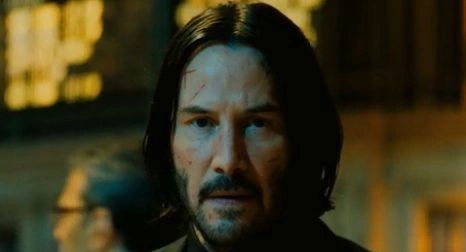
John Wick: Origins marks a thrilling return to the world of assassins, blood oaths, and brutal honor codes — but this time, it cuts deeper. While previous entries in the John Wick franchise were propelled by grief and revenge, Origins pulls back the curtain to reveal what made the man before the myth. It’s less a continuation and more a reckoning.
Set years before the events of the first film, the story interweaves the present-day John Wick — now known under his original name, Leonois — with flashbacks to his formative years as an assassin-in-training. These segments, starring breakout newcomer Lucas Walton, are more than nostalgic glances; they’re a haunting portrait of a boy forged into a killer by violence, discipline, and loss.
As Leonois unravels a betrayal from within the High Table — the governing body of the global assassin network — he is drawn into a game of shifting allegiances, secret codes, and ancient debts. Every step brings him closer to the origins of the very rules he once served, now questioned under the weight of personal conscience.
Luna Nimar’s Captain Broadway is a standout. Fierce, intelligent, and terrifyingly precise, she leads a stealth unit that operates outside the traditional High Table hierarchy. Her scenes opposite Reeves crackle with tension, not just for the choreography, but for their ideological conflict: loyalty versus evolution, control versus freedom. Her character becomes not just an obstacle, but a mirror to the man Wick once was — and could become again.
Enver Jockbar as René Ganz, a former brother-in-arms turned adversary, embodies the film’s deeper theme: what happens when loyalty breaks. Ganz’s vendetta is rooted not in cliché villainy, but in betrayal, brotherhood, and a moral code fractured by time. His presence raises the emotional stakes of every battle, adding gravity to the ballet of violence.
Director Chad Stahelski, returning to helm his fifth Wick feature, once again fuses elegance with brutality. Each action sequence is its own cinematic set piece — intimate, urgent, and beautifully framed. A nightclub in Rio becomes a maze of light and shadow, a rooftop chase in Vancouver doubles as a sniper ballet, and a knife fight in a cathedral evokes religious undertones that elevate the physical struggle to the spiritual.
Yet it’s not just action that defines Origins. There’s a reflective undercurrent running through the film. Wick — or Leonois — isn’t trying to survive anymore. He’s trying to understand. The once-mythical figure now walks a path lit by memory and regret, with quieter moments of solitude allowing Reeves to deliver one of his most layered performances to date.
The world-building also goes deeper. Origins peels back the gilded surface of the Continental Hotel, revealing its secret hierarchies and hidden sanctums. It introduces new High Table factions, each with their own code, rituals, and visual aesthetic. From underground libraries where oaths are inked in blood, to jungle temples where contracts are signed in silence, the film broadens the Wick universe without losing its intimate focus.
Composer Tyler Bates returns with a darker, more orchestral sound palette — weaving industrial percussion with mournful strings, reflecting both Wick’s inner unrest and the film’s more mythic scope.
John Wick: Origins doesn’t just deliver the action fans crave — it redefines what a prequel can be. It honors the legacy while daring to evolve the narrative. With philosophical undertones, complex characters, and visuals that border on the operatic, it promises to be not only one of the summer’s biggest blockbusters but one of the franchise’s most introspective and ambitious chapters.
In the words of Wick himself: “I’m not back. I never left. I just forgot who I was.”Origins is the story of that memory — recovered, redefined, and ready to strike.
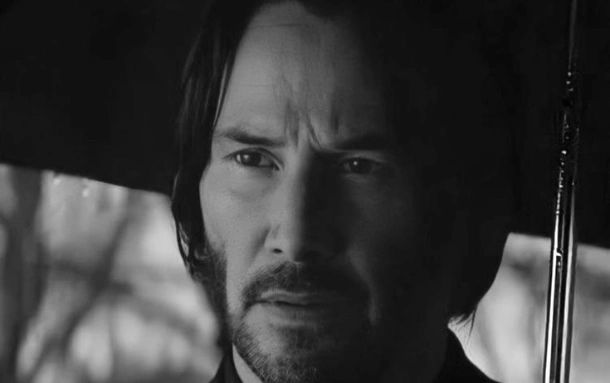
In March 2025, Tom Holland brings his unmistakable charisma to the screen in the eco-thriller “The Last Forest”, directed by Lena Karpova. Co-starring Svetlana Ustinova and Zhang Chiwen, the film investigates the disappearance of mysterious forests in Russia’s Zabaykalsky region — a story blending environmental anxiety with personal drama. Holland plays a geologist-inspector caught between science and corporate corruption surrounding natural resources.
Known for blockbusters like Spider-Man and Uncharted, Holland’s role in “The Last Forest” marks a significant creative challenge: the film not only aims to captivate visually with its Siberian forest setting, but also to showcase Holland’s capacity for nuanced, dramatic performance. Where many see only action, Holland delves into complex emotional terrain.
The film debuts on March 22, 2025, with Holland confirmed to appear at its Berlin festival promotion. “The Last Forest” is shaping up to be one of the most memorable independently produced Russian films with global backing — and Holland’s contribution is central to its impact.
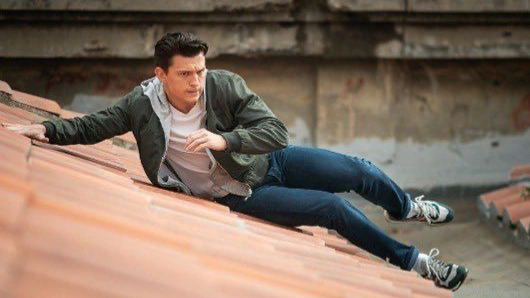
The Last Forest is not just an eco-thriller — it’s a quiet cry for help wrapped in a suspenseful, beautifully composed mystery. Set in the remote and hauntingly vast Zabaykalsky Krai of Eastern Siberia, the film uses its isolated setting as both narrative catalyst and atmospheric character. Director Lena Karpova — known for her minimalist, emotionally resonant storytelling — crafts a film that feels simultaneously intimate and epic.
Tom Holland plays James Calder, a British geologist who has spent years mapping disappearing biomes across Eurasia. Sent to investigate why entire tracts of ancient forest are vanishing without trace — not burned, not logged, but seemingly erased — he finds himself in a world where nature and truth are under siege. What begins as a scientific expedition quickly transforms into a confrontation with forces far beyond what his instruments can measure.
The deeper he ventures into the wilderness, the more unsettling his findings become. Animal populations are silent. Trees rot from within. Entire GPS-mapped valleys seem to vanish overnight. What James discovers is not a natural process — it’s a controlled dismantling, orchestrated by a global resource conglomerate whose reach stretches into government and private industry alike.
Holland’s performance is raw and restrained. Gone is the boyish exuberance of his Marvel years — here, he plays a man hollowed out by disillusionment, desperately trying to stay rational in a world that no longer follows rational laws. His James is methodical, but shaken. Courageous, but afraid to admit the scale of the crisis he’s uncovering. The role gives Holland space to embody quiet dread, grief, and a desperate, flickering hope for redemption.
Svetlana Ustinova co-stars as Irina Mikhailovna, a local botanist and former dissident who lives in near-exile at the edge of the forest. Her character provides not only scientific insight, but a cultural lens through which James must reexamine his Western approach to nature and knowledge. Irina believes the forest is not just an ecosystem, but a living memory — one that remembers destruction and doesn’t forgive it easily.
Zhang Chiwen brings measured intensity as Dr. Zhao Jian, a Chinese climate data analyst assigned to collaborate with James but secretly working with unknown interests. His loyalty, methods, and personal convictions remain shrouded in ambiguity, adding to the film’s growing sense of paranoia and unease.
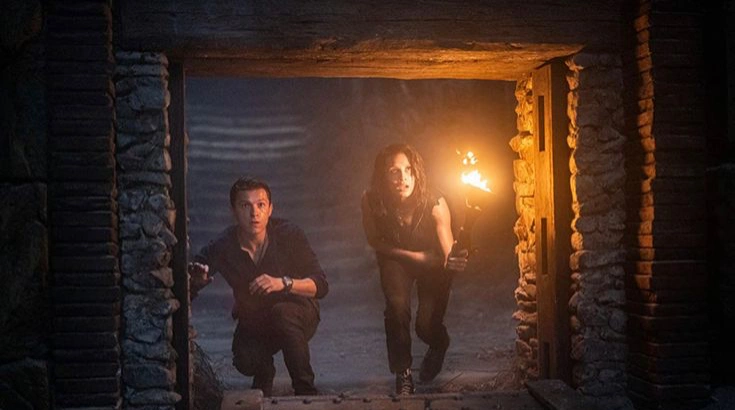
Visually, The Last Forest is stunning. Cinematographer Mikhail Alekseev captures the eerie silence of Siberia’s taiga with vast drone shots, fog-drenched ravines, and natural light that shifts from golden serenity to suffocating gray. The film moves slowly and deliberately, evoking a sense of creeping dread reminiscent of Tarkovsky’s Stalker and the ecological horror of Annihilation.
Composer Hildur Guðnadóttir delivers a sparse, unsettling score using field recordings of wind, creaking branches, and distorted birdcalls. The sound design itself becomes part of the storytelling — reinforcing the idea that the forest is watching, responding, changing.
But beneath the surface mystery lies a deeper meditation: on exploitation, colonialism, and the irreversible damage of human arrogance. As James uncovers corporate secrets buried in the soil — and faces his own complicity — the film asks pressing questions about what it means to be a witness, and what it costs to act.
Premiering on March 22, 2025, at the Berlin International Film Festival, The Last Forest is already generating buzz for its genre-defying mix of thriller, slow-burn drama, and environmental philosophy. For Tom Holland, the film is a bold, career-defining shift — a chance to prove that his talents extend far beyond the high-flying action of blockbusters.
And for audiences, it is a haunting reminder: the earth may not scream when it suffers — but it never forgets.
Actress Emma Stone,
together with the studio A24 and comedian-screenwriter Nathan Fielder, are
preparing an ambitious film centered on one of the most high-profile and
controversial events in the world of chess — the scandal that erupted in 2022
between reigning world champion Magnus Carlsen and young grandmaster Hans
Niemann. The film is based on Ben Mezrich’s book Checkmate, whose works
have previously inspired well-known movies like The Social Network and Bad
Blood.
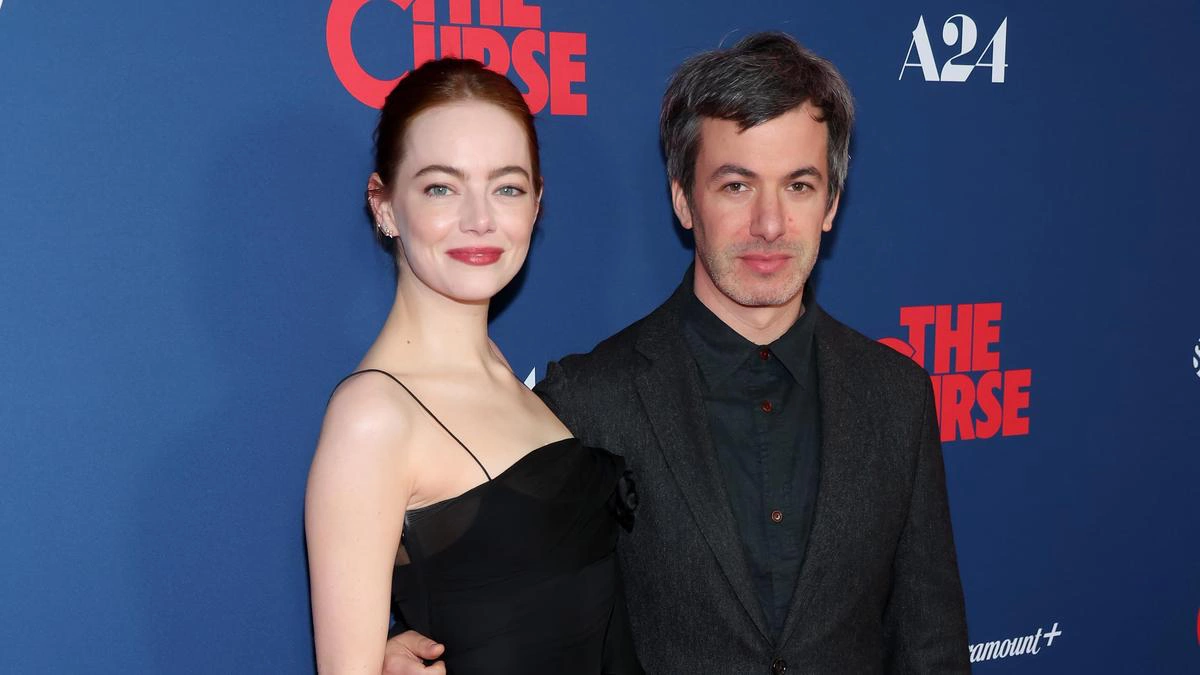
This film promises to be
more than just a sports drama; it aims to offer a deep dive into complex
relationships, issues of trust, honesty, and the impact of public opinion on
the individual. The incident that sparked the conflict occurred during the 2022
Sinquefield Cup, when Niemann unexpectedly ended Carlsen’s incredible 53-game
winning streak by defeating the world’s most decorated chess player. After the
loss, Carlsen accused Niemann of cheating, claiming he used illicit methods to
gain an advantage.

The controversy quickly
spilled beyond the chess community, generating widespread media and social
media buzz. Public interest was further fueled by popular American talk shows
such as The Daily Show with Trevor Noah and The Late Show with
Stephen Colbert, where jokes and discussions intensified the fascination with
the event. Adding a peculiar twist, Elon Musk suggested on social media that
Niemann might have used a vibrating device implanted in his body to receive cues
during the game. These absurd rumors only underscored how far the debate had
gone and how deeply this chess story had permeated popular culture.
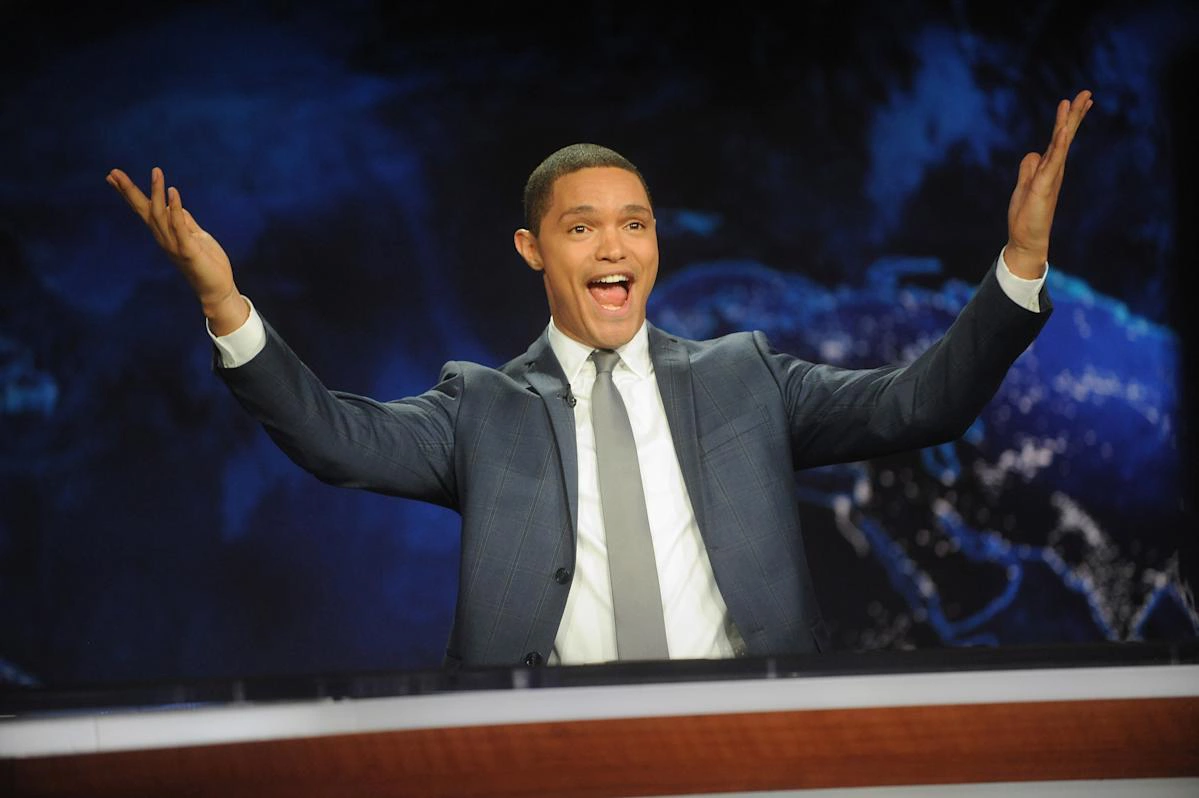
According to Variety,
several major studios and streaming platforms competed for the rights to adapt
the book, but independent company A24 won the race by offering a seven-figure
budget. The project is currently in early development, with Nathan Fielder set
to direct. Known for his unique approach to drama and comedy, Fielder created
the series Rehearsal and has previously collaborated with Emma Stone and
A24 on the series The Curse, which is contending for prestigious awards.
Emma Stone will serve as a producer alongside her husband, Dave McCary, through
their company Fruit Tree.
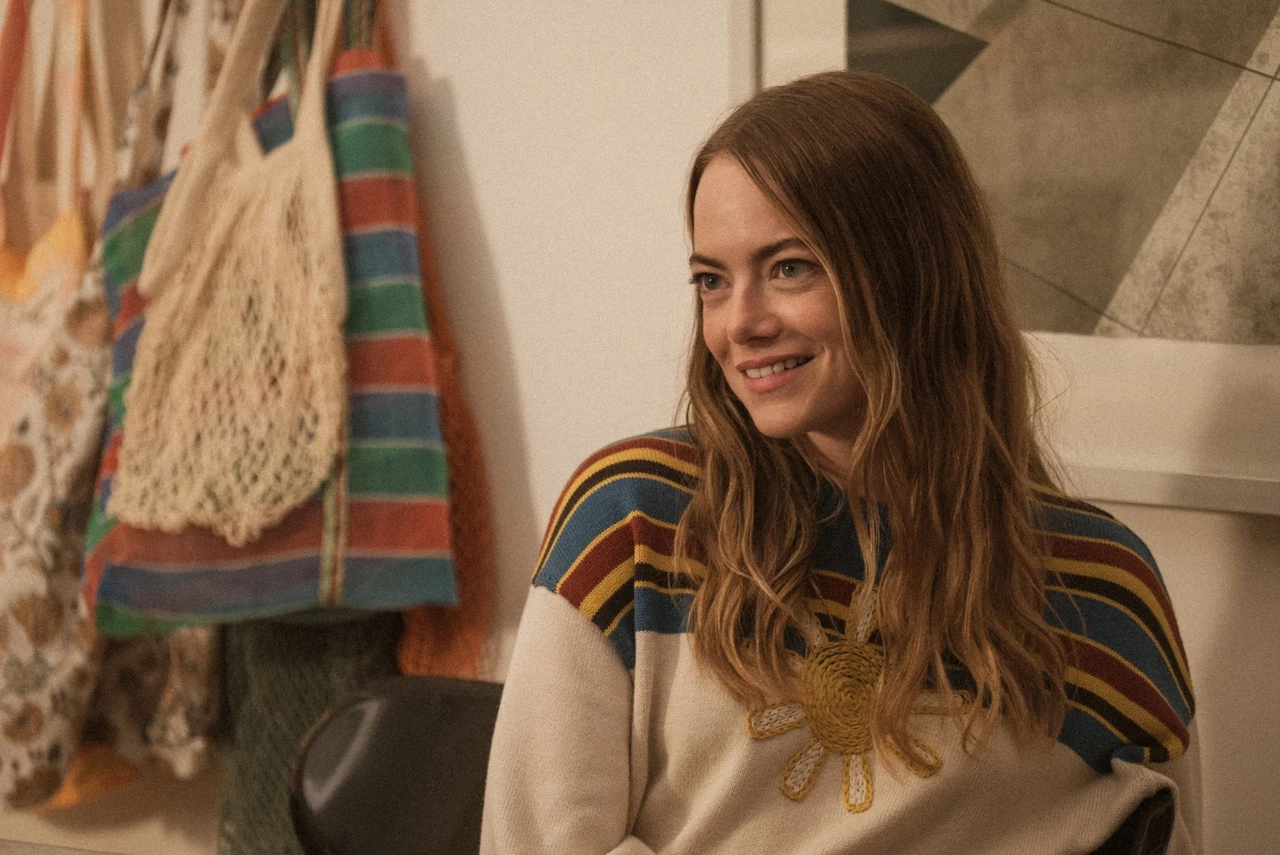
It’s worth noting that this
is not the first collaboration between Stone, Fielder, and A24, a studio
celebrated for supporting unconventional, intellectually rich projects with
distinct styles and deep meanings. In the context of the chess scandal, A24 and
the creative team promise to explore not only the athletes’ internal struggles
but also broader themes — the influence of public pressure, questions of
ethics, honesty, and human vulnerability. The film could become a kind of
mirror reflecting our times, where every action and reputation is scrutinized
under a microscope.
Personally, I believe this
project is both timely and multifaceted. Though chess may seem like a niche
sport, it provides an excellent backdrop for exploring human emotions,
conflicts, and even societal dynamics. The story of Carlsen and Niemann reveals
how easily talent and success can be questioned and highlights the powerful
role media plays in shaping public opinion. Moreover, this is a great
opportunity for cinema to delve into the psychology of the players, understand
their motivations, and portray how intense and complex the battle is — not only
on the board but beyond it.
Given the caliber of the
people involved and A24’s reputation, the film is expected to have high
artistic value and attract not only chess enthusiasts but also a broad audience
interested in drama, intrigue, and human stories. Emma Stone, long recognized
not just as an actress but as a producer with a refined taste for original
projects, seems the ideal figure to lead such a bold endeavor.
Ultimately, this film may
become not just a cinematic event but an important cultural phenomenon,
sparking renewed interest in chess while offering thought-provoking reflections
on honesty, ambition, and public life in the age of digital media.
In 2025, Timothée Chalamet
is more than just a star. He has become a kind of mirror in which Generation Z
and young millennials see not so much a hero as a collection of their fears,
desires, and contradictions. There isn’t a trace of conventional Hollywood hero
worship in his image — and that is precisely what makes him a central figure of
our time, when the cult of strength has given way to an aesthetic of
vulnerability.
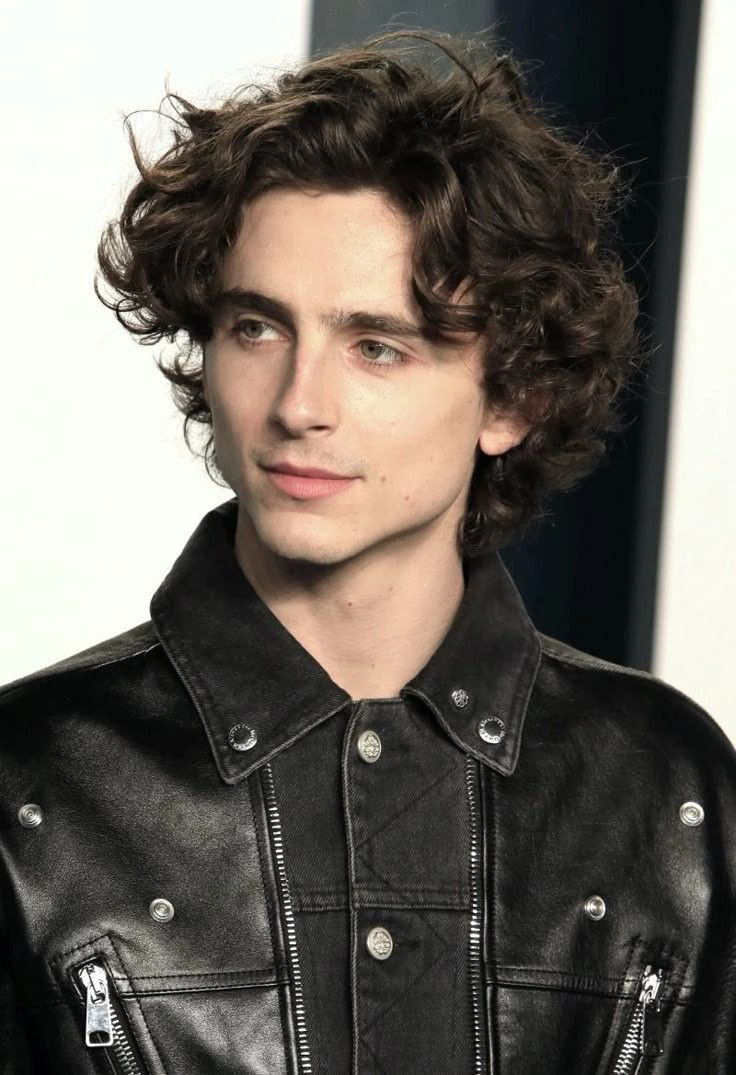
When people talk about the
new wave of Hollywood actors, Timothée Chalamet’s name is rarely left out. As
early as 2021, he had firmly established himself as one of the most promising
actors of his generation with his lead role in Denis Villeneuve’s Dune.
His portrayal of Paul Atreides — intense and composed — perfectly captured the
archetype of a modern hero: complex, ambiguous, deeply human. With the release
of the second part in 2024, Chalamet’s character evolved fully into the leader of
the Fremen, further cementing his status as a sci-fi star.
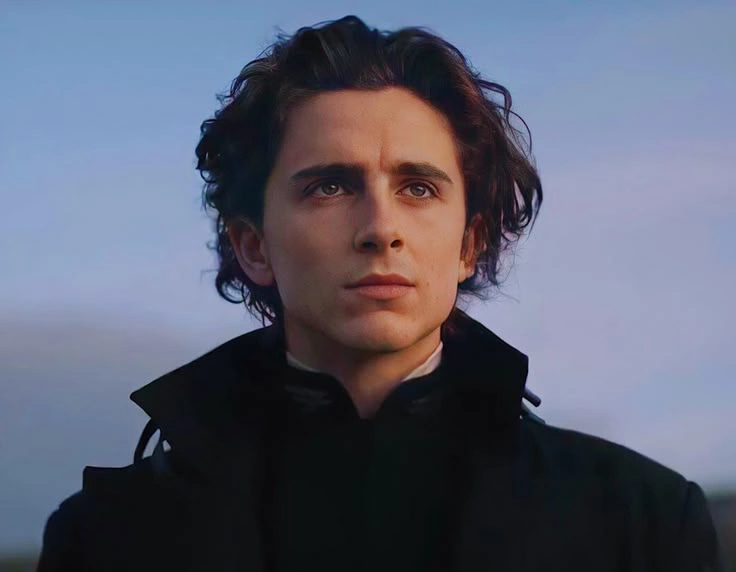
The beginning of 2025
marked a new milestone in his career: the world saw the biopic Bob Dylan:
Nobody Knows, where Chalamet not only starred but also joined the producing
team. This decision signals his growing interest in the filmmaking process
beyond acting — from selecting the material to the final cut. The film focuses
on a pivotal moment in Dylan’s life, when he shifted from folk to rock music.
Preparing for the role was meticulous: Chalamet reviewed archival performances,
learned to play the harmonica, and took vocal lessons, aiming not to imitate
but to embody his own interpretation of the musical rebel.
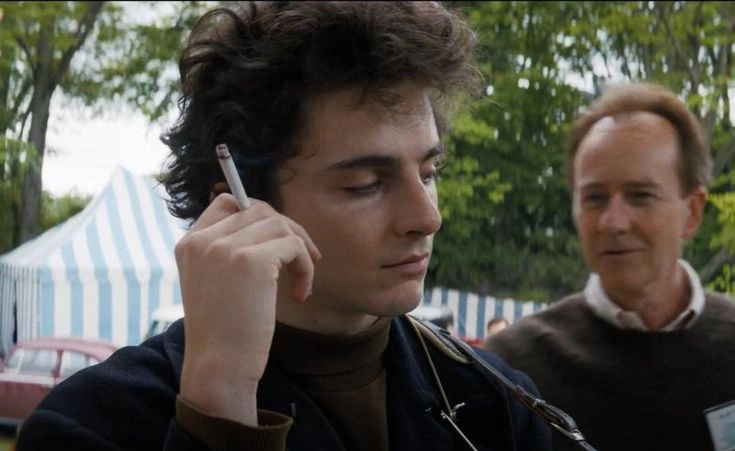
Earlier, in 2023, Chalamet
introduced the world to his Willy Wonka in the musical prequel about the famous
character. Despite initial skepticism surrounding the project, his portrayal
was praised for its delicate blend of emotional depth and theatrical flair.
This reaffirmed Chalamet’s ability to reinterpret well-known characters, giving
them fresh dimensions.
Today, his name is linked
to several upcoming projects. Industry insiders discuss his possible
involvement in a film about Stephen Hawking’s youth as well as an adaptation of
The Catcher in the Rye. Moreover, it’s likely that Chalamet will reunite
with Luca Guadagnino — their previous collaborations Call Me By Your Name
and Bones and All were hailed by critics as emotionally daring and
courageous.
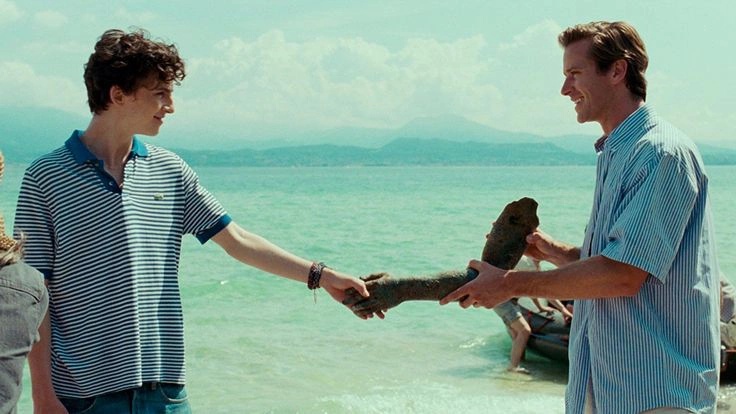
Off-screen, the actor
remains a curious and thoughtful individual. In interviews, he often speaks
about the challenge of balancing an intense work schedule with personal life.
His interests include football (he once seriously considered a professional
career), music, and classical literature. He draws inspiration from Heath
Ledger and Daniel Day-Lewis — actors known for their profound depth and total
dedication.
Beyond his career, Chalamet
embraces social responsibility. After working on a Woody Allen film, he donated
his fee to organizations supporting victims of abuse, including the Time’s Up Foundation
— a rare and courageous gesture for someone of his age and status.
Chalamet is one of the few
who manages to stay authentic in an industry demanding constant reinvention. He
walks a fine line between blockbusters and auteur cinema, fashion covers and
heartfelt interviews, global fame and an inner moral compass. It’s no surprise
that many call him the voice of a generation — even if he himself disagrees.

On the horizon are
ambitious plans: producing, a possible directorial debut, and a relentless quest
for stories that truly resonate. As he puts it: “I want cinema to awaken
emotions. Even if those emotions are uncomfortable — the main thing is that
they are real.”
Timothée has long been an
emblem of post-heroic culture. His androgynous, almost ethereal appearance
defies traditional glossy standards. But this isn’t a weakness — it’s the new
norm. He doesn’t try to be rugged; he grants himself the right to be sensitive.
In 2025, this is no longer eccentricity but a new form of masculinity, where
it’s acceptable to not know, to be uncertain, to not always win.
Yet, what defines Chalamet
most isn’t talent or charisma. It’s his ability not to impose. He doesn’t
dictate trends or tell people who they should be. He simply exists in his own
rhythm. In one of his rare columns, he wrote, “Maybe being quiet is a form of
protest.” This phrase is the quintessence of his cultural code.
He has become a symbol of
uncertainty — not as weakness, but as depth. His characters rarely solve
problems; they live through them. Chalamet shows that strength lies not in
victory but in surviving — wounded, imperfect, human. For viewers raised amid
climate anxiety, political distrust, and post-pandemic fatigue, such honesty is
worth more than any superhero triumph.
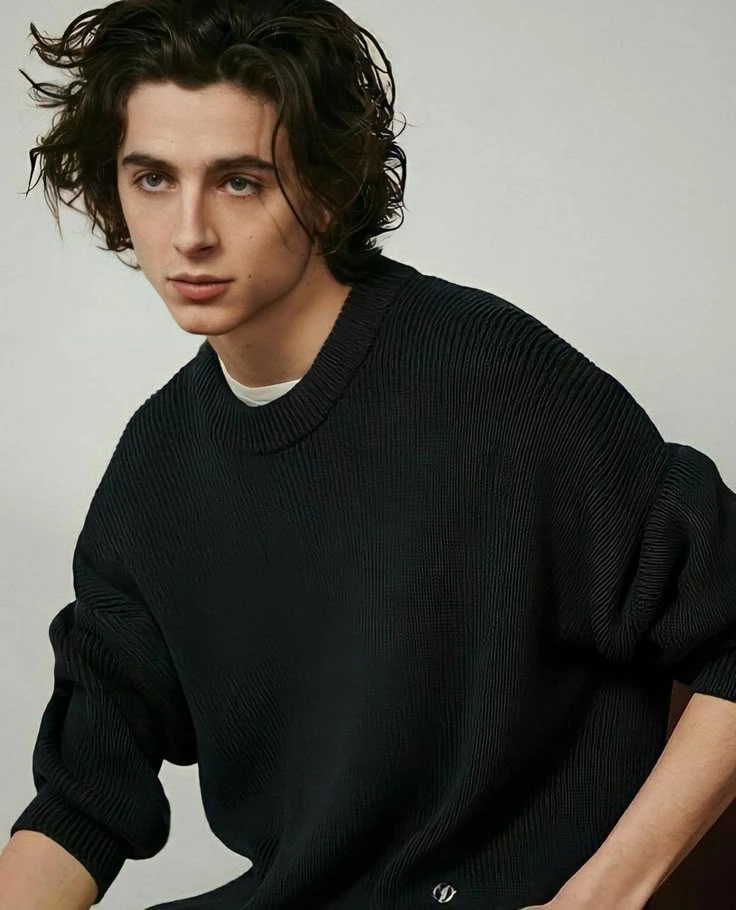
In a world that pressures
us to be someone else, Timothée Chalamet offers the luxury of being oneself.
Without final punctuation, without ready answers. And that is exactly what
makes him not just an actor, but the intuition of a generation.
Today, Zendaya is widely
recognized as the true voice of Generation Z and one of the brightest stars of
her time. Although she is only 28 years old, she is already among the
highest-paid actresses in Hollywood. Moreover, Zendaya is the youngest-ever
recipient of an Emmy Award. In this article, we’ll explore how her career
began, the heights she has reached, and how she manages to balance acting with
activism.
The future star was born in
1996 in California. Interestingly, acting wasn’t a random choice for her:
Zendaya’s mother worked as the head manager at the California Shakespeare
Theater in Orinda. After school, the young Zendaya often accompanied her mother
to rehearsals, which likely laid the foundation for her love of the stage.
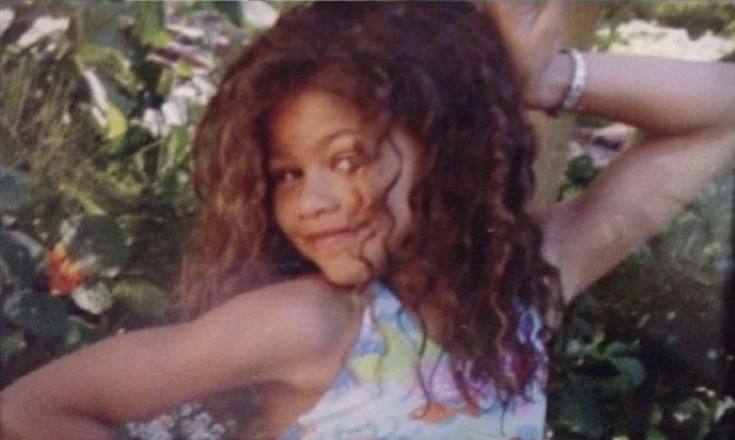
Zendaya’s desire to become
an actress appeared early on. Even in elementary school, she auditioned for
plays — at her first audition, she landed the role of a silkworm in a
production of James and the Giant Peach. Although she had no lines, she
gave it her all to make the character memorable and later said she became “the
best silkworm” of them all.
Alongside acting, Zendaya
pursued dance — she was passionate about hip-hop from the age of eight and
danced with the Future Shock dance troupe. By age thirteen, she realized that
her small hometown wouldn’t allow her to fulfill her full potential and told
her parents she dreamed of a career as a star and acting in teen TV shows. Her
parents believed in her talent: her father quit his job and moved with her to
Hollywood, while her mother took on extra work to support the family.
Thanks to her family’s
support, Zendaya quickly began appearing on television. She landed one of the
lead roles in the Disney series Shake It Up, playing Raquel “Rocky”
Blue, a dancer. This project marked her TV debut after appearing in a Selena
Gomez music video.
Zendaya’s character was
calm, rational, and disciplined — qualities that matched her dance background
and school life. Even then, Zendaya showed strong principles: she refused to
kiss on camera and negotiated a compromise so her on-screen partner would kiss
her on the cheek instead.
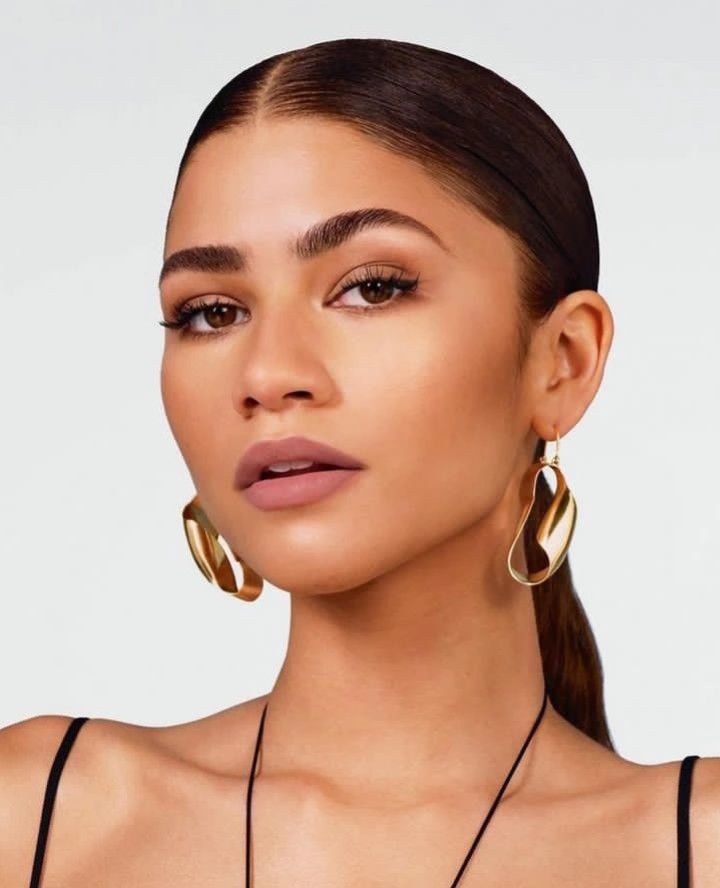
In 2015, Disney premiered
the show K.C. Undercover, where Zendaya starred as a high school super
spy. By then, she was 19 and had become a producer on the series. The show
stood out for its feminist tone and modern approach. Zendaya insisted that her
character not be a perfect superhero, but rather a relatable, even slightly
awkward, yet strong and independent young woman.
Parallel to acting, Zendaya
also tried her hand at music. She recorded duets with Bella Thorne for Shake
It Up and released an album, but in 2016 she decided to end her solo music
career. Later, she contributed to soundtracks for the series Euphoria
and performed at the Coachella festival.
After K.C. Undercover
ended in 2018, Zendaya starred in The Greatest Showman and Spider-Man:
Homecoming. In the latter, she played MJ — Peter Parker’s smart and
somewhat reserved classmate, whose romance with him becomes her first love
experience. The role was memorable, and she reprised it in the franchise’s
sequels.
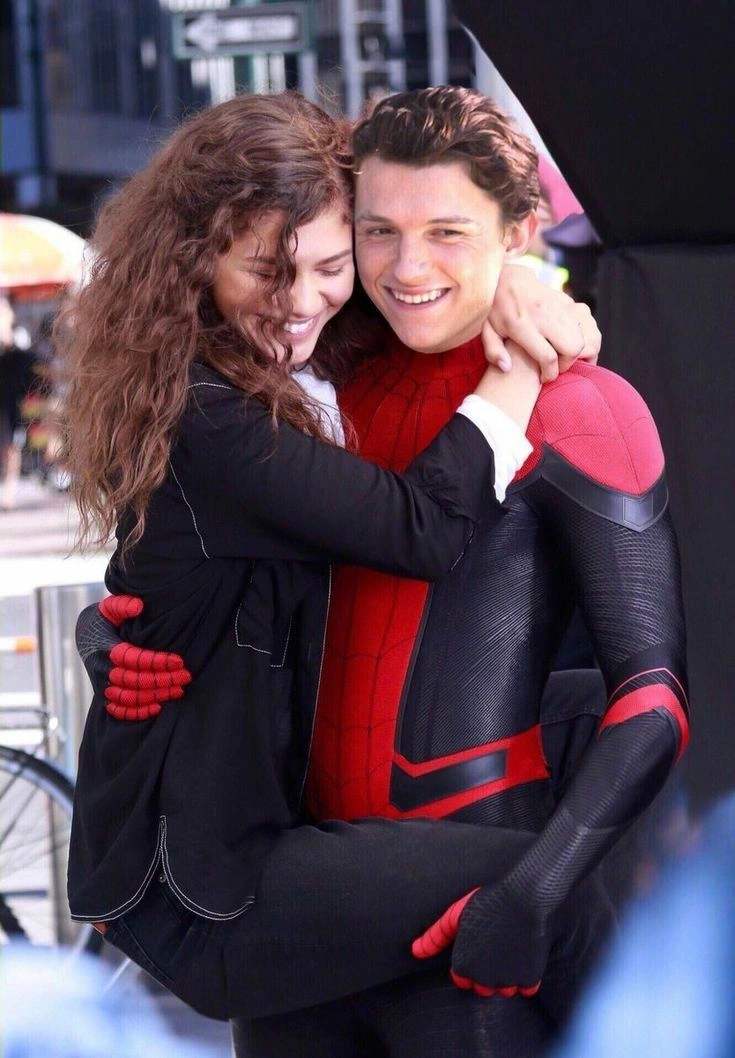
However, Zendaya’s real
global breakthrough came with the dramatic series Euphoria (2019), where
she portrayed Rue — a high schooler struggling with drug addiction. For this
role, she won two Emmy Awards and a Golden Globe. The transition from
lighthearted teen roles to complex drama was a serious challenge for Zendaya —
she worried about how the change would be received. But she took the risk and
proved her capacity for deep, multifaceted performances.
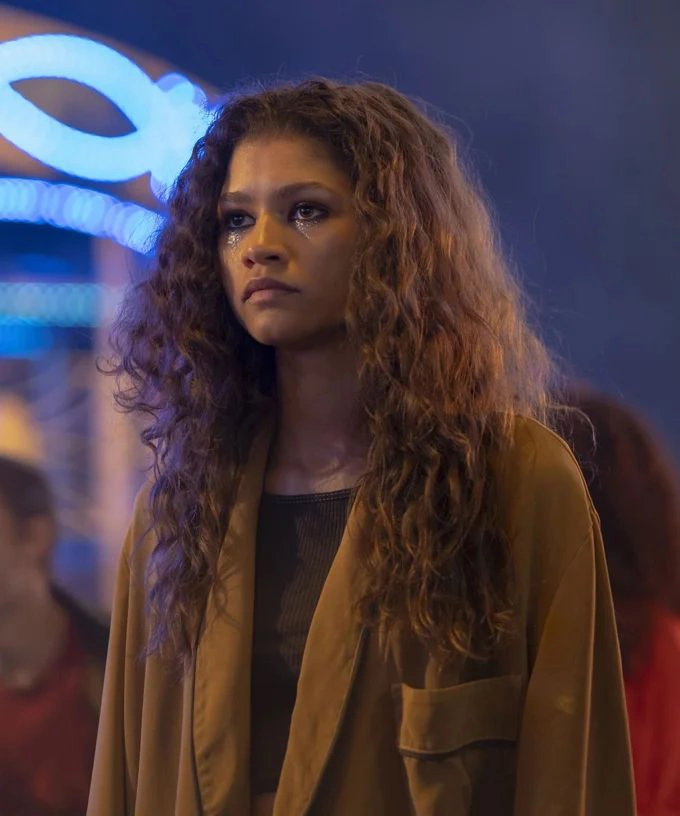
Euphoria creator Sam Levinson developed
Rue’s character alongside Zendaya, taking into account her personal growth and
emotions. Although Zendaya has never dealt with drug addiction herself, she
deeply understood the loneliness and inner turmoil of teenagers. Two seasons of
Euphoria have been released so far, with a third and final season
expected no earlier than 2025. Zendaya reportedly earns about a million dollars
per episode, making her one of the highest-paid young actresses on television.
Beyond her artistic
success, Zendaya is an outspoken advocate against unrealistic beauty standards.
In 2015, she publicly condemned excessive retouching of her photos in a glossy
magazine and shared unfiltered images with her fans.
This kind of star is not a
return to old Hollywood icons, but the birth of something entirely new. Not
just a symbol, not just an artist — but a cultural architect. Someone who
brings generations together on a common ground of meaning.
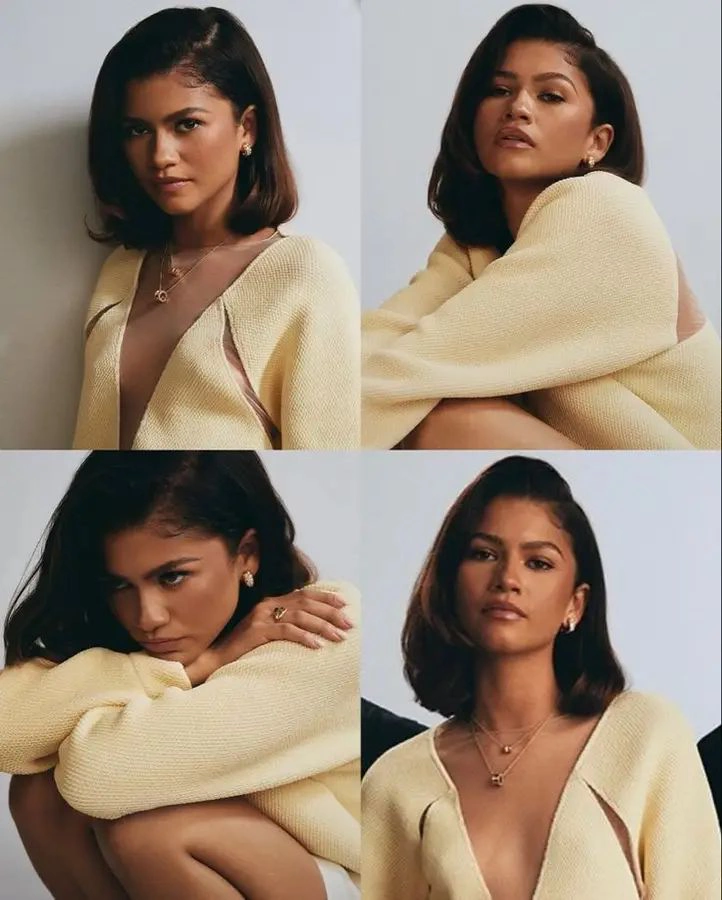
So why is she the voice of
her generation? Because she’s not afraid to be controversial. Because she
unites opposites — vulnerability and strength, art and activism, glamor and
truth. Because she doesn’t fit in — she rewrites the rules.
And most importantly — she
doesn’t just inspire. She gives tools. And that is far more valuable than
applause.
And which actress of the year 2025, in fact, are you? 🔥